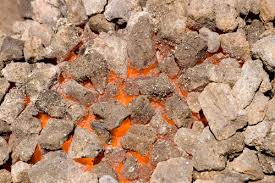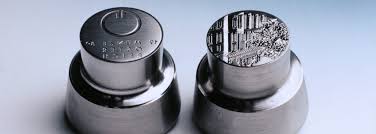DEFINITION OF Hot forging and cold forging :-
Hot forging and cold forging are two different metal forming processes that deliver similar results. Forging is the process of deforming metal into a predetermined shape using certain tools and equipment—deformation is accomplished using hot,cold, or even warm forging processes.






Hot forging and cold forging are two different metal forming processes that deliver similar results. Forging is the process of deforming metal into a predetermined shape using certain tools and equipment—deformation is accomplished using hot,cold, or even warm forging processes.
Cold and Hot Forging: An Overview
Forging is a metal shaping process in which a malleable metal part, known as a blank, billet or work-piece, is worked to a predetermined shape by one or more processes such as hammering, upsetting, pressing, rolling and so forth. Cold forming is a precision category of forging which does the same thing without heating of the material (room temperature), or removal of material
Among all manufacturing processes, forging technology has a special place because it can be used to produce parts of superior mechanical properties with minimum waste of material.
Forging can be produced at multiple temperature levels. Room temperature (or heat added process) forging is commonly called cold forging. This process is less costly, less heat energy consuming, provides greater dimensional accuracy, and can be very efficient for mass production of small parts (less than 50lbs). The downfall is that it requires much larger pressures to form the metal requiring large machinery and more frequent tool wear .
is also important to remember that some technologies are unbeatin Courmayeur in 1909 the family was already renowned among alpinists for the quality of their ice axes. The story goes that old Henry, controversial and always ready to take the mickey, used to convince even the most wary clients of the strength of his tools were by striking them on the huge block of granite outside his workshop. But where did this strength and above all this self confidence come from Precisely from the technique of hot drop forging, exactly the same that produced the blades of the Sword o Damascus and of Toledo, world famous for their superior strength.

Steel doesn't have the cold and uniform characteristics that we usually give it but is instead groups of molecular chains that line up and distribute themselves according to lines of force that create the strength of the piece of 'iron'. A bit like fibres in wood that we're used to seeing and choosing according to their natural formation to get the best possible stamina. The huge advantage of steel is that it can be shaped to how we want it when it is heated to 'cherry red' temperature (about 950'C). Mantice At this point it can be modified through being beaten to align its fibres according to the lines of force needed to obtain the maximum strength in the direction that
we want: for example following the length of an ice axe's blade
To summarise: the fibres in steel are internally aligned in a casual sequence, these can be re-aligned which ever direction we want when the steel is heated to a certain temperature and then 'ironed out' by beating it and forcing it into the desired alignment. This operation, followed up by heat treatment (what was once known as 'tempering' that fixed permanently the internal structure), is precisely known as 'hot forging'. It is how the best characteristics and the desired form are obtained from steel. No other process has ever, and ever will, better this one: quiz a specialist in metallurgy an
No comments:
Post a Comment